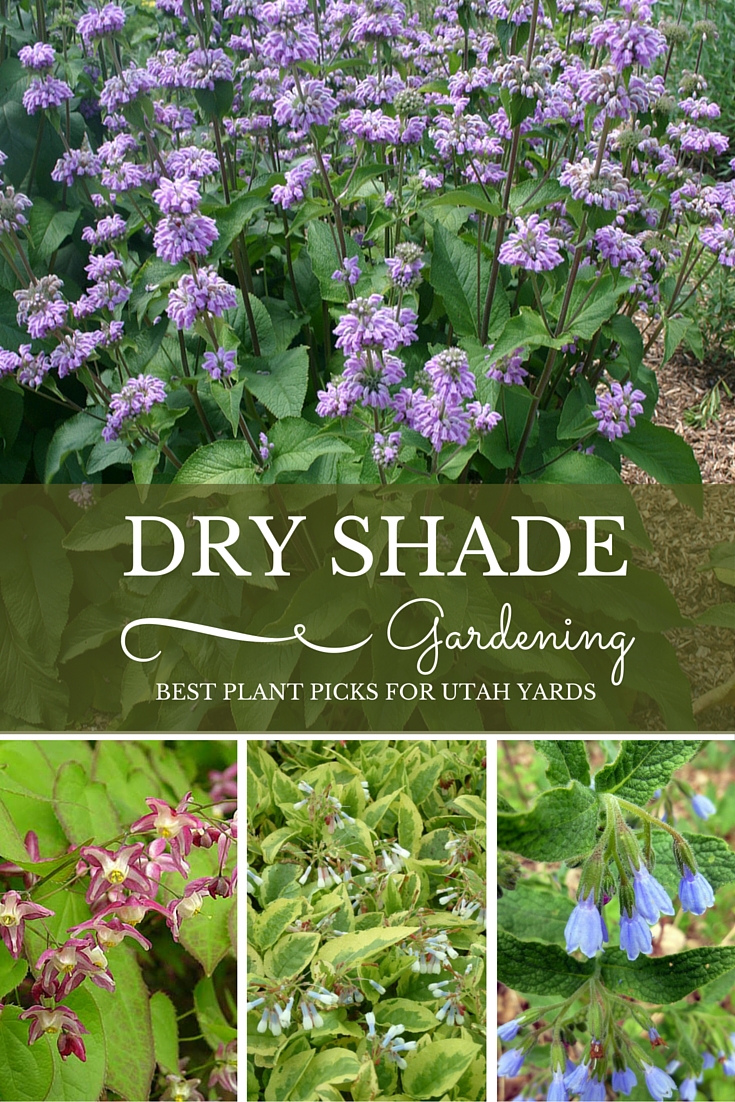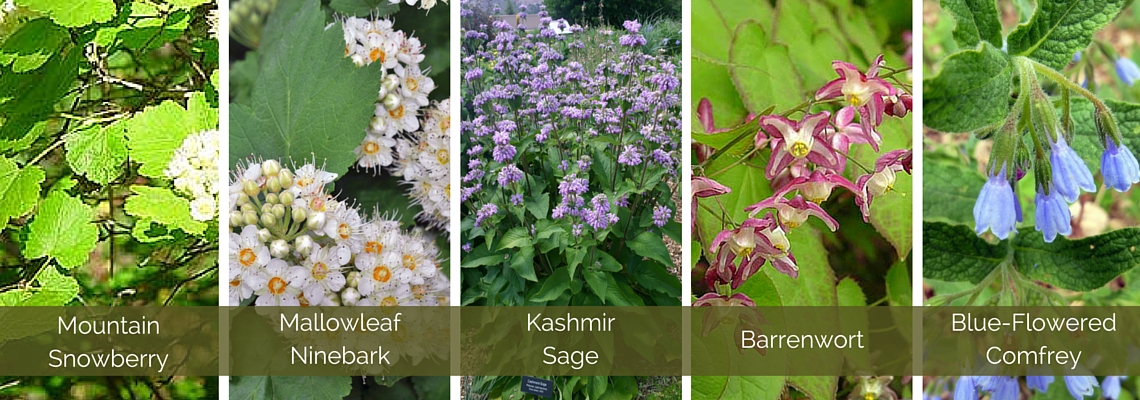
Dry Shade Gardening
-
 We all have places in our landscape that greet us with certain challenges. One of the challenges I have recently faced while creating new designs for the Conservation Garden Park are dry shade areas. We’re re-designing areas that used to be full sun but as the landscape has grown, the beds are now shaded by mature trees and shrubs. Those same plants have also created a lot of root competition which makes it difficult for smaller plants to thrive. Luckily, there are some wonderful plants that do well in shade-- even when water is somewhat limited.
We all have places in our landscape that greet us with certain challenges. One of the challenges I have recently faced while creating new designs for the Conservation Garden Park are dry shade areas. We’re re-designing areas that used to be full sun but as the landscape has grown, the beds are now shaded by mature trees and shrubs. Those same plants have also created a lot of root competition which makes it difficult for smaller plants to thrive. Luckily, there are some wonderful plants that do well in shade-- even when water is somewhat limited.
Another key consideration for shade is using foliage to create a mix of color and texture. In shade, dark foliage (burgundy or very dark green) will visually recede, sometimes even seeming to disappear. Plants with yellow, white or silver leaves will "pop" making shady places feel brighter. When bright leaf colors are planted next to dark leaves, both become more noticeable. Beauty is created through contrast. It's not just about the individual plant but how it looks as compared to its neighbors. Leaf color is one way to accomplish this but contrasting textures is also important. Big leaves next to small leaves. Thick, fleshy leaves next to soft, ferny leaves. It's through the contrast of shape, color and form that each plant remains unique while being planted close together which avoids the undesirable "green jungle" messy look.
Whenever I am planning for dry shade, my go-to plant palette typically starts with native plants. Here in Utah we have many beautiful native plant species that are proven successful in our climate. Below are some of my favorite plant selections for the dry shade garden.
1. Mountain Snowberry (Symphoricampos utahensis)
Mountain Snowberry is a small shrub that can thrive in quite a bit of shade. It has petite bell shaped flowers and white berries which are especially showy in the fall. There are several desirable cultivars of Snowberry that bring even more impact. ‘Blade of Sun’ Snowberry offers additional interest in the form of striking chartreuse colored foliage; it is low growing, so it can be used more as a groundcover rather than a shrub. Another cultivar, ‘Amethyst’ offers pink-purple berries instead of the traditional white.
-
2. Mallow-leaf Ninebark (Physocarpus malvaceous)
A dry shade native shrub. It is a member of the rose family and is a small growing shrub with white/pink flowers that bloom in late spring through early summer. The Mallow-leaf Ninebark has exfoliating bark and leaves that turn red in the fall.
3. Kashmir Sage (Phlomis cashmieriana)
Dry shade plants don't have to be selected from native Utah plants. Kashmir Sage is native to the Himalayas and Kashmir but is adapted to our climate. Kashmir Sage is a very drought tolerant plant and can grow in full shade conditions. It has silvery foliage and is a large plant, growing 3-4ft. tall. It can add structure and color to any garden but is invaluable when planning a dry shade garden.
-

-
4. Red Barrenwort (Epimedium x rubrum)
Another wonderful full shade plant. Unlike Kashmir Sage, Red Barrenwort is better used as a groundcover or border plant. It has a typical woodland landscape look with green heart shaped leaves that are tinged with red around the edges as they emerge. Red Barrenwort has red and yellow flowers that bloom in April and the leaves turn red in the fall, adding autumn interest to your shade garden.
5. Blue Flowered Ornamental Comfrey (Symphytum grandiflorum 'Hidcote Blue')
A great groundcover for a dry shade garden. It has beautiful blue flowers that bloom in early spring and only reaches a height around 12 inches but spreads to about 2 feet. This plant also has a cousin, Variegated Comfrey, Symphtum 'Goldsmith', that has variegated leaves and blue hanging bell shaped flowers. Though lower growing than the Symphytum grandiflorum 'Hidcote Blue', it also grows in a tight forming groundcover with bold, strappy leaves streaked with yellow and green. Either cultivar of comfrey would be a beautiful addition to the dry shady site and would help discourage weeds due to its closely knit growth habit.
-


